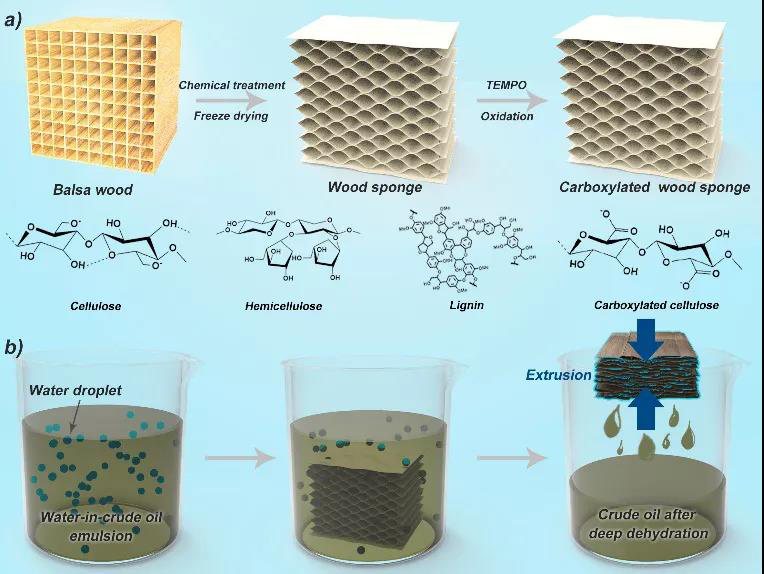The SIEPM Research Group Has Made A Series of Progress in The Field of Oil Separation
Time: 2020-12-09 visit times :46
As a widely used energy substance and chemical raw material, crude oil plays an indispensable role in the modernization of social economy, human survival and development and many other processes. In recent decades, the frequent occurrence of crude oil spills and the massive discharge of oil-bearing wastewater have exerted a great impact on the earth's environment, and also continuously threatened the survival and development of animals and human beings. Therefore, oil-water separation materials and related separation technologies have attracted extensive attention. However, the high viscosity and strong adhesion of crude oil greatly limit the efficient separation, cleaning and recovery of crude oil by relevant materials and conventional technologies. Many researchers mainly focused on the cracked light oil or the organic solvents.

Fig 1. Schematic diagram of wood - based carbon sponge structure and adsorption separation process
Taking the feature of high viscosity of crude oil into consideration, SIEPM research group of Zhejiang University took the solar-thermal conversion effect of blackbody material such as polydopamine which effectively reduced viscosity of crude oil. As a result, this method greatly improve the absorption speed of crude oil adsorption.
In view of the strong adhesion property of crude oil, SIEPM made full use of the unique chemical structure of cellulose and its derivatives. There are a large number of strong hydrophilic groups on the surface, and the high crystallizability of the bulk can limit the movement and reconstruction of hydrophilic groups. Such unique structure realize the excellent adhesion resistance of porous separation materials to crude oil.

Fig. 5. Preparation of natural wood - based crude oil dehydration sponge and its crude oil dehydration process
Zhe Da Road 38, Hangzhou 310027, China
Tel : 86-571-87951308
Fax : 86-571-87951592
Email : ciciliu33@zju.edu.cn